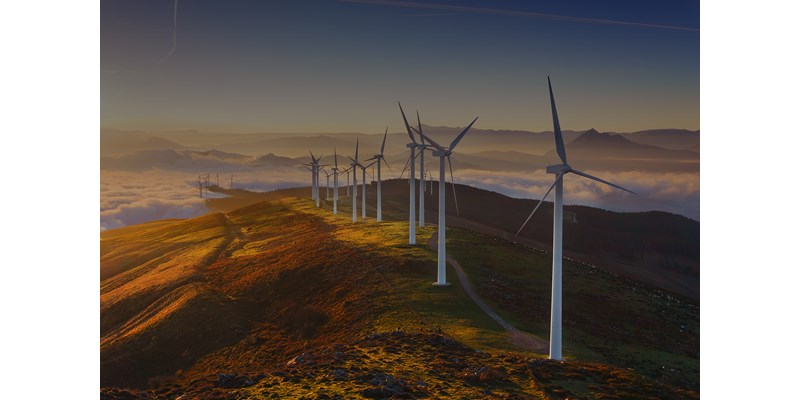1 minute read
The oil market downturn and the tone set by the Paris Agreement have already shifted the focus away from fossil fuels, but how quickly could we see the tides change and decisively tip the scales to renewables?
Together with Greentech Media, a Wood Mackenzie company focused on researching decarbonisation and the decentralisation of energy, we've created our carbon-constrained scenario. This is an alternative path to the future that focuses on the consistent, marginal change that will disrupt established markets long before a wholesale switch away from hydrocarbons occurs.
Complete the form to get your complimentary report
What is our carbon-constrained scenario?
Paul McConnell, Research Director, Global Trends
The most striking aspect of our carbon-constrained scenario is long-term, double-digit growth for renewable energy , specifically wind and solar power. Combined, these two sources currently supply approximately 8% of the world's power demand needs but will supply 30% in 2035 — constituting a seven-fold increase in the size of the renewables market. This will be driven by a dramatic fall in the costs of wind and solar capacity, as well as the cost of energy storage.
Wind and solar also cut coal's contribution by 30%, almost obviating the need for new nuclear and eventually curtailing gas. Because short-term energy storage technologies enjoy significant overlap with EV batteries, we expect that a feedback loop will develop as adoption of both accelerates, further driving down costs.
The transportation and petrochemicals sectors currently command approximately 79% of global oil demand, with the remainder consumed in industry and the residential/commercial arena. Under the carbon-constrained scenario, we remain confident that petrochemical demand growth will still remain positive, although to a lesser degree than in our base case. But the transport sector's adoption of EVs will seriously disrupt oil demand.
The rise of EVs, and is the Paris Agreement achievable?
Paul McConnell, Research Director, Global Trends
In 2017, EVs are attracting increasing attention, but they remain a niche market. However, the falling cost of EVs and their batteries will put EV purchase prices on par with ICE vehicles, and automakers are responding to this trend by developing new EVs. If this continues, we see EVs accounting for 21% of the global car stock by 2035.
Although this is still less than a quarter of the global vehicle fleet, EVs will threaten the status quo in two ways: displacing oil demand as the EV fleet size increases and forcing ICEs to become more efficient as consumers demand comparable running costs from legacy engine types.
A paradigm shift could arrive long before 2035. After President Trump announced his intent to withdraw the US from the Paris Agreement, other countries, US states, cities and global corporations reaffirmed their commitment to curtailing emissions growth.
Meanwhile, momentum is building within business to adapt to a changing world. Dormant for a decade, carbon has resurfaced as a critical concern in the boardrooms around the world. The downturn spurred the majors into focusing on renewables to build diversity and optionality into portfolios and best position themselves in today's radically different energy landscape.
While we consider the Paris Agreement's 2° C world impossible to achieve given current technology, pressure to do more — for governments and energy companies alike —would lead to a future that's much closer to our carbon-constrained scenario than many would expect. Through consistent changes in consumer preferences and carbon policies, renewables and other low-carbon technologies could radically disrupt the energy landscape far sooner than expected.
This research was prepared in partnership with Greentech Media, a Wood Mackenzie Business, the premier market intelligence provider for the decarbonisation and decentralisation of energy.
Find out more about peak oil demand
The market used to worry about peak oil supply. Now the focus has shifted. With the world now considering a structural decline in oil demand, which sectors will feel the greatest impact? Read our latest report, The rise and fall of black gold: when will peak oil demand strike?





